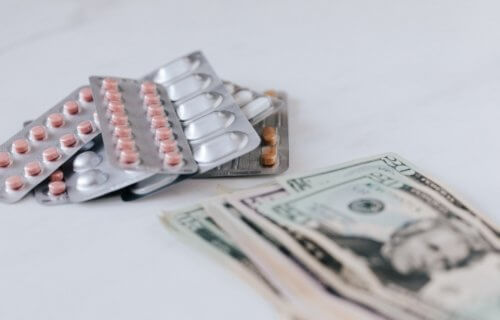SANTA MONICA, Calif. — If you watch enough television in the United States, you’ll eventually see two kinds of commercials. One will be advertising for various types of brand name prescription drugs, while the other will promote how to get a discount on these ridiculously expensive medications. A new study finds while brand name prescriptions make up only a small portion of the medicines Americans take, they’re costing patients more than anywhere else in the world.
Researchers from the RAND Corporation say drugs prices in the U.S. are 2.56 times higher than in 32 other nations. While that may seem unnerving enough, their report reveals unbranded and generic medications have little to do with this gap. In fact, when just looking at brand name drugs, the U.S. price is 3.44 times higher than the rest of the world.
“Brand-name drugs are the primary driver of the higher prescription drug prices in the United States,” says study lead author Andrew Mulcahy in a media release. “We found consistently high U.S. brand name prices regardless of our methodological decisions.”
The global policy think tank’s report finds generic drugs actually make up 84 percent of the medications sold in America, but only account for 12 percent of the amount of money spent on prescriptions each year. In comparison to most nations, Americans pay less for generic drugs.
‘We pay through the nose’ for brand-name drugs
RAND researchers examined 2018 data on worldwide drug prices; the most up-to-date figures comparing U.S. prices to other nations in the Organization for Economic Co-operation and Development.
The team calculated price indexes under a wide range of different scenarios. While some discounts shortened the gap between the U.S. and the world, the overall price of prescriptions always came out significantly higher in America. When looking at generic substitutes however, the U.S. consistently came out ahead of the rest of the world. On average, unbranded medications cost 84 percent of what they do in other countries.
“For the generic drugs that make up a large majority of the prescriptions written in the United States, our costs are lower,” the senior health policy researcher at RAND says. “It’s just for the brand name drugs that we pay through the nose.”
How do other major countries compare?
The study finds, among the G7 nations, the United Kingdom, France, and Italy typically have the lowest prescription drug prices. Canada, Germany, and Japan have higher prices in comparison. While previous reports have also studied how the U.S. measures up to the rest of the G7, RAND says that data is nearly a decade old.
The new report estimates industry-standard IQVIA MIDAS data for drug sales in 2018. Researchers analyzed American prices in comparison to 32 OECD nations. The sales data factors in most of the prescription drugs currently on the market in the U.S.
They also examined several subsets of prescription medications, including brand name originators, generics, biologics, and nonbiologic drugs. The results reveal some of the highest-priced prescriptions cost thousands of dollars per treatment in the United States. These drugs usually treat life-threatening conditions like cancer or hepatitis C.
“Many of the most-expensive medications are the biologic treatments that we often see advertised on television,” Mulcahy adds. “The hope is that competition from biosimilars will drive down prices and spending for biologics. But biosimilars are available for only a handful of biologics in the United States.”
The prescription drug boom of the 2000’s
Study authors reveal that this staggering surge in drug prices worldwide took off in the last two decades. Across all OECD nations, $795 billion was spent on prescription drugs in 2018.
The U.S. accounted for 58 percent of these sales however, this only made up 24 percent of the volume of drugs sold. Researchers believe prescription drug spending makes up over 10 percent of all health care costs in the nation now.
Between 2000 and 2017, drug spending skyrocketed by 76 percent. The study warns that those costs will likely increase faster than other health care expenses over the next 10 years.
The study appears in RAND’s report, “International Prescription Drug Price Comparisons: Current Empirical Estimates and Comparison with Previous Studies.”
